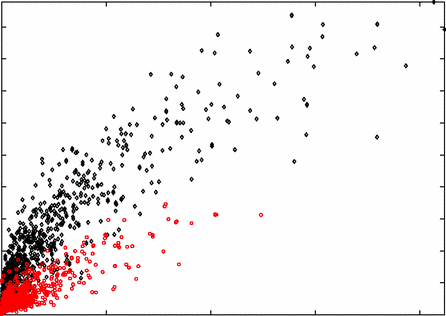Abstract
The nature of the individual transitions on the potential energy landscape (PEL) associated with particle motion are directly examined for model fragile glass-forming polymer melts, and the results are compared to those of an antiplasticized polymer system. In previous work, we established that the addition of antiplasticizer reduces the fragility of glass formation so that the antiplasticized material is a stronger glass former. In the present work, we find that the antiplasticizing molecules reduce the energy barriers for relaxation compared to the pure polymer, implying that the antiplasticized system has smaller barriers to overcome in order to explore its configuration space. We examine the cooperativity of segmental motion in these bulk fluids and find that more extensive stringlike collective motion enables the system to overcome larger potential energy barriers, in qualitative agreement with both the Stillinger-Weber and Adam-Gibbs views of glass formation. Notably, the stringlike collective motion identified by our PEL analysis corresponds to incremental displacements that occur within larger-scale stringlike particle displacement processes associated with PEL metabasin transitions that mediate structural relaxation. These “substrings” nonetheless seem to exhibit changes in relative size with antiplasticization similar to those observed in “superstrings” that arise at elevated temperatures. We also study the effects of confinement on the energy barriers in each system. Film confinement makes the energy barriers substantially smaller in the pure polymer, while it has little effect on the energy barriers in the antiplasticized system. This observation is qualitatively consistent with our previous studies of stringlike motion in these fluids at higher temperatures and with recent experimental measurements by Torkelson and co-workers.
